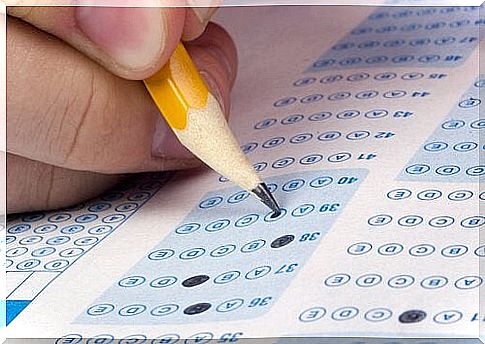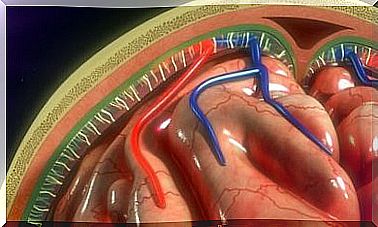Do The Exams Evaluate Students Correctly?

Today the most widely used method to evaluate our students are the dreaded exams. We are talking about tests where the evaluated person has to answer a series of questions about the subject to be evaluated. But are these exams the best way to assess students’ knowledge? Are there other alternatives?
Before talking about the validity of the exams and the alternatives, it is important to know what the evaluation is and what its objective is. If we ask any person what the evaluation of a student is, they will probably answer us indirectly: stating that it serves to check if the evaluated person has the necessary knowledge.
Thus, in case of having them, the student would pass and otherwise he would fail. However, in reality, this last law is far from being fulfilled and therefore also the objective pursued by the tests that are normally raised in our educational system.

A good evaluation, within the educational framework, focuses on the identification of the student’s current knowledge and skills in order to know in what learning situation they are. And what purpose does this have? A very simple one that many teachers often forget: evaluate if the didactic system that is proposed is working for that student.
Thus, the grade, beyond being a “quantification” of the student’s knowledge on the scale proposed by the teacher, should give us an idea of whether the plan that we are using so that the students assimilate the knowledge that we are trying to transmit to them is working .
In this sense, if done well, evaluation would be a powerful tool at the service of the students’ learning process. However, seeing evaluation only as a method of selecting or classifying students is a very poor and reduced vision of it.
What problems do traditional exams have?
Understanding the assessment as a tool to guide students and adjust the way we teach them, we will see that traditional exams have many problems to help us in these two tasks. Here are its shortcomings:
- Only the student is evaluated. The only one who must be judged is the student, it is not evaluated whether the teacher or the educational environment are adequate for the development of the students. In fact, there are many teachers who presume to be the ones who fail everyone or those who do not approve of them.
- Only the teacher evaluates. The student submits to the subjective judgment of the criteria of a single teacher. There are no other criteria other than the criteria of the teacher who teaches the subject.
- Only the results matter. Traditional exams may say something about the student’s current knowledge, but nothing about the process. It doesn’t matter if you’ve really made a deep understanding of them or just memorized them the day before, the result can be the same.
- Only knowledge is evaluated. The situation in which the student finds himself or what strengths or weaknesses he has is not taken into account. We cannot guide student learning without knowing what resources they have.
- It is only evaluated quantitatively. In the end, the traditional exams are summarized in a grade, which must show or should be adjusted to the proportion of matter or skills that the student has been able to assimilate.
- They encourage competition rather than cooperation. Ranking students with better or worse grades helps create a competitive environment. In addition, in this competition indirectly raised by the system, the most common thing is that in the end the student focuses on getting a good grade rather than on better learning the knowledge that is evaluated.

Alternatives to traditional exams
Taking into account the problems posed by this traditional evaluation, alternatives will have to be sought. We could say that there are three pillars on which the evaluation should be based to be suitable: (a) Evaluation by competencies, (b) Portfolio Systems and (c) Use of ICTs.
Competency assessment
The objective of a subject is for the student to learn a series of knowledge, but also and above all to learn a series of skills . For example, the objective of mathematics may be for the student to become familiar with and memorize some formulas and processes, but more important than that is that they understand them and know how to apply them to solve problems.
The assessment should identify which competences the student has mastered and which have not yet developed. Knowing this, we can guide learning to strengthen the competencies that they have and stimulate the acquisition of those that they do not yet have. For this to work, it is essential that the subject has well-planned competencies and a flexible instruction system that is as individualized as possible.
Portfolio systems
Competency assessment tells us what to assess, but we also need to know how. Portfolio systems provide us with an individualized assessment method focused on student development. But what is a portfolio system?
The psychologist Kingore defines them as: “The portfolio is a systematic collection representative of the student’s work, which is selected between the teacher and the student to provide information about the child’s development, their learning profile, interests, level of achievement. and the state of learning over time “
In other words, portfolios are still “folders” where the student places all the work done on the subject and is continuously reviewed by the teacher to see how it evolves. This allows teachers to know the learning status of each student and prepare instruction around it. Obviously it would also be useful to see if the student has developed the necessary skills.
The problem with these portfolios is the complexity of their management due to the amount of information they contain. A possible solution to this difficulty would be the one I comment on in the next section.

Use of ICTs (Information and Communication Technologies)
Computers, internet and other communication systems (ICTs) offer us many resources that can benefit the evaluation. ICTs can help us when it comes to solving the difficult management of portfolios. In this sense, the existence of an online program that manages all the information provided by students and teachers to the different electronic portfolios would greatly facilitate evaluation.
In conclusion, I leave you a question to ponder: knowing the deficiencies of traditional exams and the alternatives that exist, why are exams still the default evaluation system?









